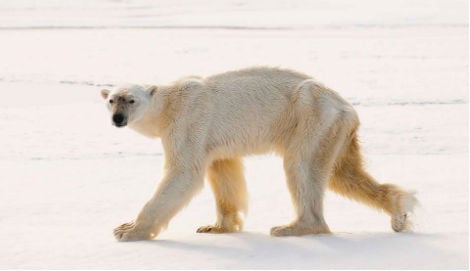The bear was this March filmed diving for a total of three minutes and ten seconds underwater in order to sneak up on three bearded seals sitting at the edge of an ice floe.
However, as the bear leapt out of the water, the seal spun around so that it failed to catch it, and then slipped into the water.
Rinie van Meurs, who runs Polar Bear spotting excursions for tourists from Spitsbergen, the largest island in the Svalbard Archipelago, published an article on the sighting, which took place in 2014, in this August’s issue of Polar Biology.
In the article, written with Ian Stirling, an adjunct professor at the University of Alberta, van Meurs argues that bears are being forced to dive for longer as a reduction in ice cover as a result of global warming shrinks their hunting ground.
Normally polar bears dive for a maximum of half a minute, and the previous record was two minutes.
“It is possible that the ability to hold its breath for so long may indicate the initial development of a significant adaptation for living and hunting in its marine environment,” he and co-author Ian Stirling suggest.
However, in the article, they argue that no adaptation could be fast enough to save the bears from drastic reduction in numbers.
“Increased diving ability cannot evolve rapidly enough to compensate for the increasing difficulty of hunting seals because of the rapidly declining availability of sea ice during the open-water period resulting from climate warming.”
After the bear realised that its record-breaking exertion had been in vain, it lay on the ice exhausted for more than 20 seconds, before slowly swimming back.
Van Meurs told Aftenposten that over his 27 summers touring in Svalbard, he had watched the sea ice becomes thinner and thinner.
“Sea ice has changed a lot during this period, both in terms of quantity and thickness,” he said. “In the first years it was difficult to sail around the archipelago in August due to heavy ice. Now we can each year go all the way around as early as July.”


 Please whitelist us to continue reading.
Please whitelist us to continue reading.
Member comments